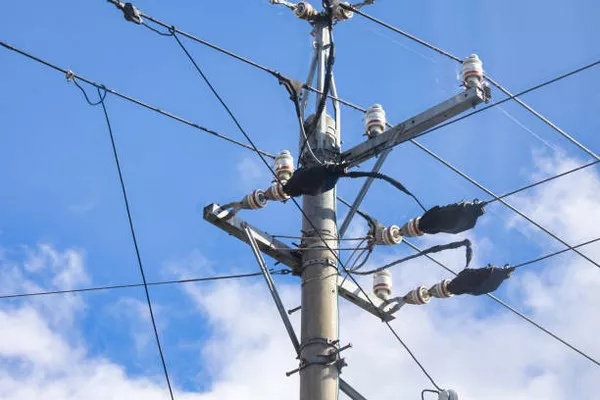In the realm of electrical engineering and power distribution, the sight of a yellow transformer often invokes curiosity. These sturdy structures play a pivotal role in supplying electricity to homes, businesses, and industries, yet their specific purpose and function may remain elusive to many. This article endeavors to demystify the enigma surrounding the yellow transformer, exploring its significance, functionality, and various aspects.
1. The Basics of Transformers
Transformers are essential components in electrical systems, facilitating the transmission and distribution of electricity across different voltage levels. At their core, transformers consist of primary and secondary windings coupled by a magnetic core. Through electromagnetic induction, transformers enable the transfer of electrical energy from one circuit to another while altering the voltage levels.
1.1 Understanding Voltage Transformation
Voltage transformation lies at the heart of transformer operation. By varying the number of turns in the primary and secondary windings, transformers can step up or step down voltages, allowing for efficient power transmission over long distances and matching the voltage requirements of various electrical devices.
1.2 Role in Power Distribution
In power distribution networks, transformers serve several crucial functions. They step down high-voltage electricity from power plants to safer levels for residential and commercial use. Additionally, distribution transformers further reduce voltage for localized distribution, ensuring that electricity reaches end-users reliably and safely.
2. Identifying the Yellow Transformer
While transformers come in various colors depending on their applications and geographical locations, the distinctive yellow hue often denotes specific types or ownership of transformers. Understanding the significance of the yellow transformer requires delving into its diverse classifications and roles within the electrical infrastructure.
2.1 Utility-Owned Transformers
Yellow transformers are commonly associated with utility-owned distribution transformers. These transformers are typically stationed atop utility poles or housed in ground-level enclosures along streets and highways. The vibrant yellow color serves as a visual indicator, making it easier for utility personnel to identify and maintain these critical assets amidst diverse urban landscapes.
2.2 Substation Equipment
In some instances, yellow transformers may be found within substations, which act as hubs for voltage transformation and distribution. Substation transformers play a vital role in regulating voltage levels, managing power flow, and ensuring grid stability. The conspicuous yellow coloration aids in distinguishing these transformers from other substation equipment, facilitating operational maintenance and troubleshooting activities.
3. Maintenance and Safety Considerations
Proper maintenance and safety protocols are paramount in ensuring the reliable performance of yellow transformers and safeguarding personnel and communities from potential hazards. Understanding the maintenance requirements and safety considerations associated with these transformers is essential for utilities, electrical contractors, and the general public.
3.1 Routine Inspections and Testing
Routine inspections and testing procedures are indispensable for assessing the health and functionality of yellow transformers. Visual inspections, thermographic imaging, and oil analysis are common techniques employed to detect anomalies such as overheating, insulation degradation, and fluid leaks. Timely identification of issues enables proactive maintenance and mitigates the risk of transformer failures and outages.
3.2 Environmental Considerations
Environmental factors can significantly impact the performance and longevity of yellow transformers. Exposure to harsh weather conditions, temperature fluctuations, and contaminants can accelerate wear and corrosion, compromising transformer integrity. Proper siting, enclosure design, and environmental monitoring help mitigate these risks and prolong transformer service life.
4. Technological Advancements and Future Trends
The landscape of transformer technology is continuously evolving, driven by advancements in materials, design methodologies, and digitalization. These innovations not only enhance the efficiency and reliability of yellow transformers but also enable smarter grid management and integration of renewable energy sources.
4.1 Smart Grid Integration
The integration of smart grid technologies revolutionizes the operation and monitoring of yellow transformers. By incorporating sensors, communication networks, and data analytics, utilities gain real-time insights into transformer performance, load patterns, and predictive maintenance requirements. This proactive approach enhances grid resilience, optimizes asset utilization, and minimizes downtime.
4.2 Eco-Friendly Solutions
In response to growing environmental concerns, manufacturers are developing eco-friendly transformer solutions with reduced environmental footprint and enhanced sustainability. Innovations such as biodegradable insulating fluids, eco-friendly insulation materials, and energy-efficient designs align with global efforts to mitigate climate change and promote green energy initiatives.
See Also The Power of Toroidal Transformers: Applications & Advantages
Conclusion
The yellow transformer, with its conspicuous presence in urban and rural landscapes, symbolizes the backbone of modern electrical infrastructure. Through voltage transformation and distribution, these essential components ensure the reliable delivery of electricity to homes, businesses, and industries. By understanding their significance, functionality, and evolving trends, stakeholders can effectively harness the power of yellow transformers while advancing towards a sustainable energy future.

